As a young kid, I was lucky to have visited the Taj Mahal. Like most, I had picked up the customary souvenir (a replica) to earn bragging rights among my peers. As I grew up, I was horrified to hear the story that the Emperor had ordered that the chief architect’s hands be cut post completion of the mausoleum. My young mind could not relate to this gruesome act associated with a building that is touted as a symbol of love. I decided never to visit the place again.
As I grew up, my resolution was put to test. First it was Ustad Zakir Hussain and the Taj Mahal tea campaign. Like many, I was mesmerized as the Ustad’s curly locks, lightening fingers flying across the surface of the tabla and his smile lit up our good old ‘Konark’ TV screen. The visuals were complemented by an anonymous voice: “Wah, Ustad, wah!” To which, the Ustad replied “Arre huzoor, wah Taj boliye!” And all the while, the shining white monument, resplendent in all its glory stood in the background. Feeling nostalgic! You can relive the magic on YouTube.
The next was when I realized that there is no scholarly evidence to the cutting of hands story. I was relieved as this provided a perfect excuse to break my resolution. Years went by and although I started visiting Delhi regularly, from where Agra isn’t too far, the trip to the Taj never happened.
Fast forward to 2015: as we were trying to settle down in Gurgaon it became clear to us that we would need to be inspired once in a while to continue to earn a living without letting go of our interests. After a couple of short visits to Lansdowne and the majestic Bharatpur, it was time to go back to the Taj. Following our customary research which enabled us to book entry tickets online prior to our visit, we hit the road. We took the NH2 as I was unable to convince our friendly driver of the merits of enjoying the Yamuna Expressway. After a friendly banter, we agreed to take the expressway on our way back.
The journey was fairly uneventful but as we entered Agra, the presence of the mausoleum was overbearing. It seemed all the road signs led to one direction and every other establishment had something to do with it. We settled down in one of the numerous hotels which ended with either the phrase “Palace” or “Mahal” promising to one another that we would be at the gates by 6am. Despite our best intentions and the hot cup of tea served by the only staff in the Palace who was up at that unearthly hour, we could not reach the gate before 6.30. We realized we had not factored the walk of around 750 meters from Shilpgram (eastern gate). From Shilpgram, where you can park your vehicle, you have the option of taking a rickshaw, a horse driven cart or just walk. If you stay in a fancier “Palace”, you are probably eligible for the battery vehicles which chose to ignore us, the lesser mortals as they breezed past. The walk, by the way is quite pleasant in the morning.
After flashing our online ticket receipts (strangely we were probably among a handful of visitors who did not have a printed ticket), we were allowed in for a few hours of bliss. A word of advice: the queues at the gate are separate for men and women and it becomes easier if you have more than a copy of the online receipts.
I would stop and let the pictures below narrate our experience for the next two hours. Suffice to say, the workmanship, the design and the architecture takes your breath away. As you admire the beauty of the mausoleum, it helps to have the excellent hand held audio guide to seek answers to many questions that are likely crop up in your mind.
For me, more than the questions, the realization that this UNESCO World Heritage Site is a great example of a fusion of various structural traditions (including Moghul, Persian, Central Asian, pre-Moghul Indian and European architecture) was more important. At a time when we seem to become more and more impatient and intolerant, it dawned on me that one of the finest memorials in the world is indeed one of finest examples of multiculturalism and assimilation of cultures. It represents India as it has always been and hopefully would continue to be.
In this context, I could not resist sharing this poem written by the greatest Bengali ever born.
You knew, Shah Jehan, life and youth, wealth and glory, they all drift away in the current of time. You strove, therefore, to perpetuate only the sorrow of your heart…Let the splendor of diamond, pearl, and ruby vanish like the magic shimmer of the rainbow. Only let this one tear-drop, this Tajmahal, glisten spotlessly bright on the cheek of time, forever and ever.
O King, you are no more. Your empire has vanished like a dream, your throne lies shattered…your minstrels sing no more, your musicians no longer mingle their strains with the murmuring Jamuna…Despite all this, the courier of your love, untarnished by time, unwearied, unmoved by the rise and fall of empires, unconcerned with the ebb and flow of life and death, carries the ageless message of your love from age to age: ‘Never shall I forget you, beloved, never.’
- By Rabindranath Tagore (translated by Kshitish Roy) from One Hundred and One Poems by Rabindranath Tagore (pp. 95-96)
https://catalyst.library.jhu.edu/catalog/bib_724626
And here are the images (finally)
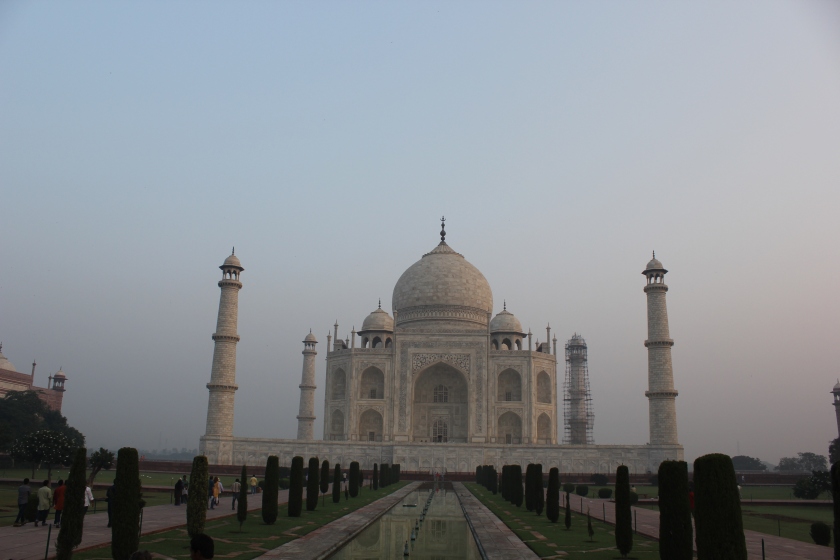
Arrey Huzoor Wah Taj Boliye!
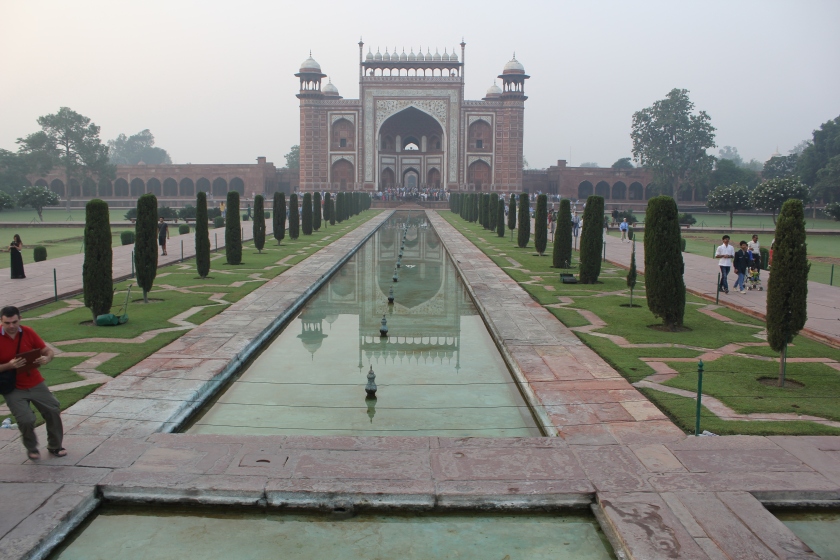
Care for a walk in the park?
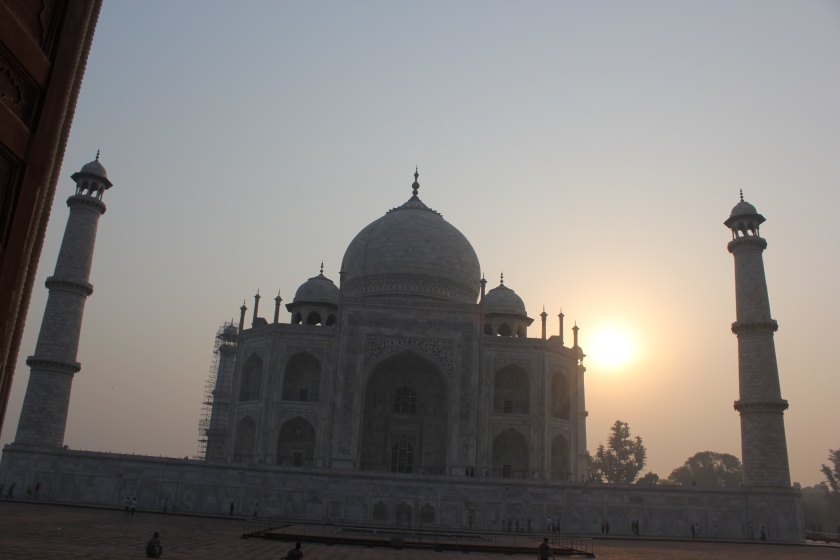
What a way to start the day!
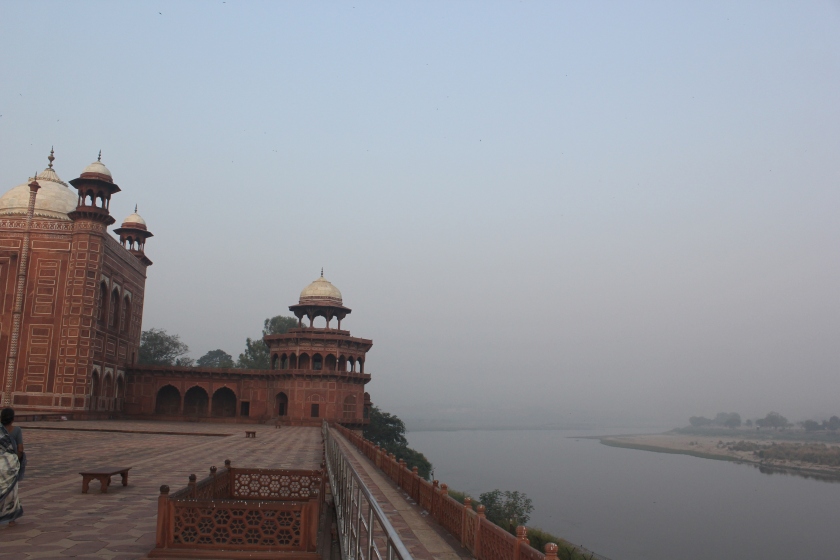
The not so impressive Yamuna as a backdrop!
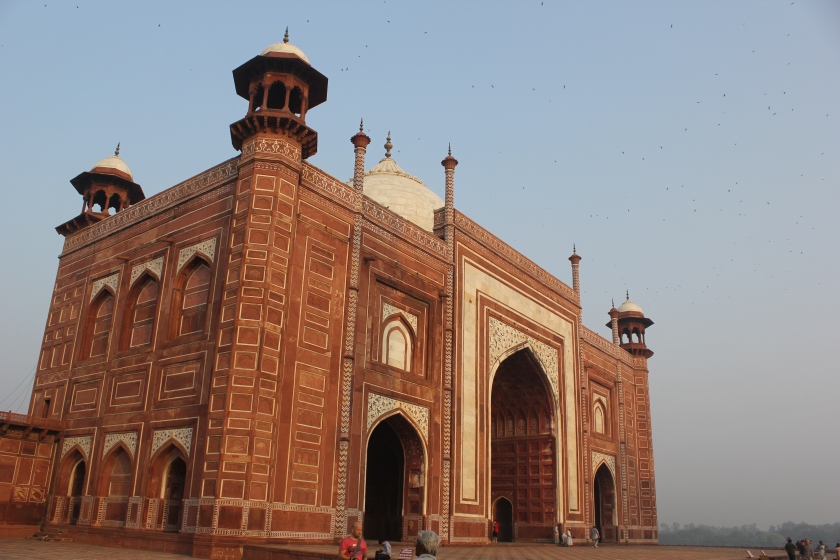 A memorial like no other!
A memorial like no other!
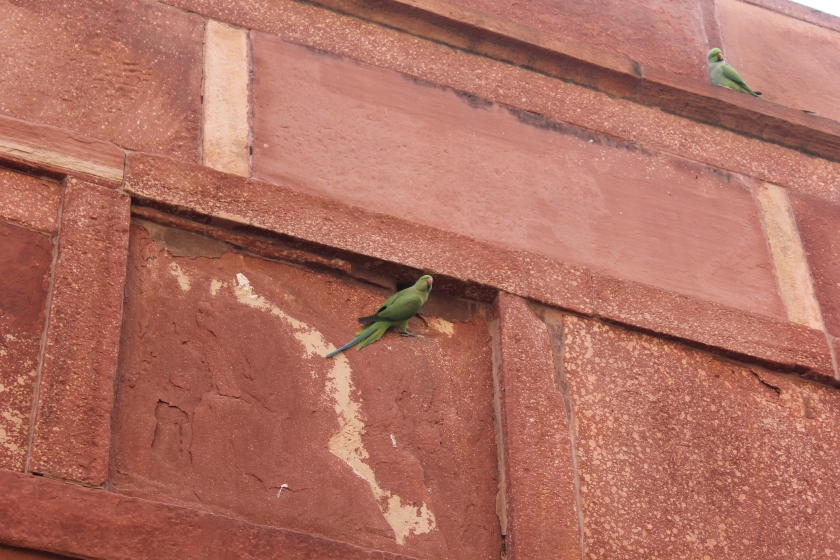
We call Taj our home!
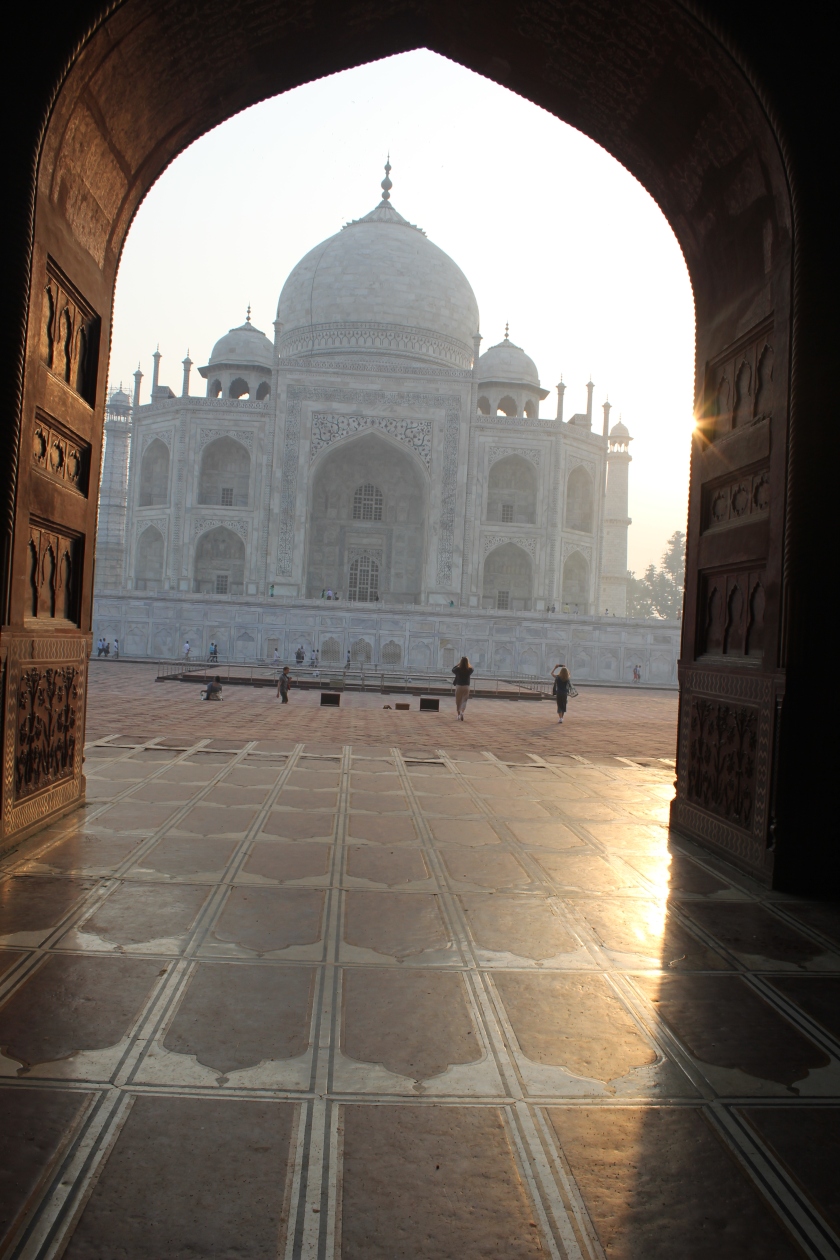
Till we meet again!
Ustad, Konark Tv, Wah ! You took us to a different era..nice
LikeLike
Thanks! glad you liked it. Please do drop by for more.
LikeLiked by 1 person